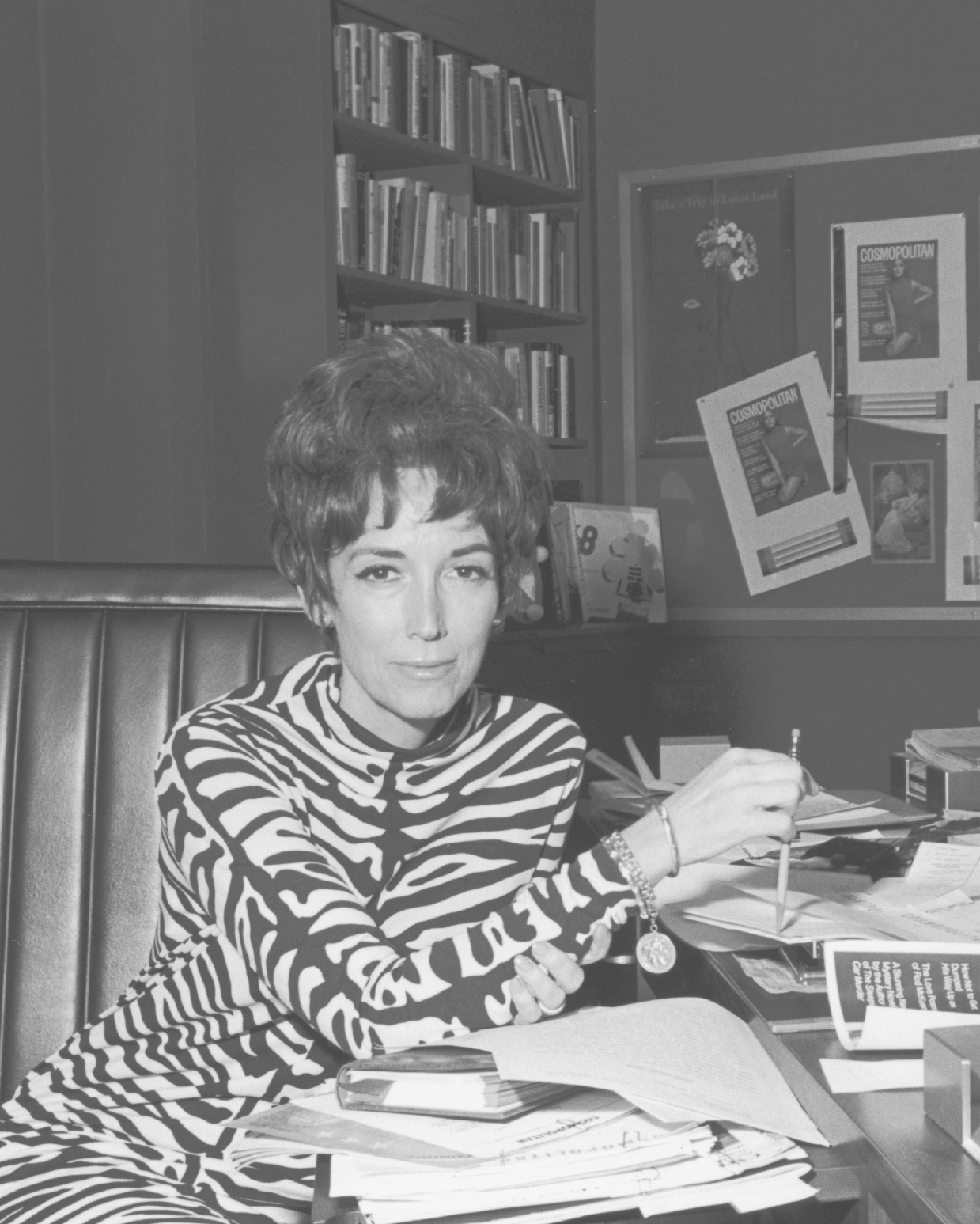4
Magazines in the Age of Specialization
Printed Page 95

Helen Gurley Brown in her office at Cosmopolitan in the 1960s.
Cosmopolitan, like the magazine industry in general, has demonstrated a remarkable ability to change with the times in order to sustain circulation and attract advertisers. When it was first launched in 1886, it was an illustrated monthly focusing on childcare and household decoration. After almost going out of business, a new owner gave it a second chance as an illustrated magazine of literature. In 1905, Cosmopolitan got another new owner (famed newspaper publisher William Randolph Hearst), who made it into a progressive muckraking magazine focusing on exposing corruption in business, government, and social institutions. But by the next decade, it was back to an illustrated monthly targeting women and featuring short stories and serialized novels. In the 1960s, the magazine had its most radical makeover. Helen Gurley Brown, a talented advertising copywriter and author of the best-selling book Sex and the Single Girl, was hired to reinvent the magazine modeled on her vision of strong, sexually liberated women. The new Cosmopolitan both reflected and fueled the sexual revolution erupting during the 1960s and was marketed to the “Cosmo Girl”: a woman age eighteen to thirty-four with an interest in love, sex, fashion, and a career.
Brown’s vision of Cosmo lives on in the magazine’s “fun, fearless female” slogan. Today, it’s the top-selling women’s fashion magazine—surpassing competitors like Glamour, InStyle, and Vogue. It also maintains a popular Web site and a mobile version for reading on smartphones. Cosmopolitan’s ability to reinvent itself repeatedly over the last 125 years testifies to the remarkable power of magazines as a mass medium to both adapt to and shape American society and culture.
SINCE THE 1740s, magazines have played a key role in America, becoming a national mass medium even before newspapers (which at the time were mainly local and regional in scope). Magazines provided venues for political leaders and thinkers to offer their views on the broad issues and events of the age, including public education, abolition, women’s suffrage, and the Civil War. Many leading literary figures also used magazines to gain public exposure for their essays or stories. Readers consumed the articles and fictional accounts offered in magazines and snapped up the products and services advertised in each issue—hastening the rise of a consumer society. As consumerism grew, magazines themselves changed, with the most popular titles often focusing less on news and essays, and more on fashion, celebrities, advice, and entertainment.
Today, more than nineteen thousand magazines are published in the United States annually. And like newspapers, radio, movies, and television, these magazines, including Cosmopolitan, both reflect and create what’s going on in American life.
In this chapter, we track the shifting role of magazines in the United States by:
- tracing the early history of magazines, including their highly politicized purpose in colonial and early America and their transformation into the country’s first national medium
- examining turning points in the evolution of modern American magazines, such as the emergence of muckraking as a magazine-reporting style and the rise and fall of general-interest magazines
- taking stock of the many different types of magazines specialized for particular audiences (including men, women, sports fans, young people, and minorities)
- discovering how magazines operate economically, including how they make money and what they spend money on to fulfill their mission and surmount challenges
- considering how magazines today are affecting the health of our democratic society